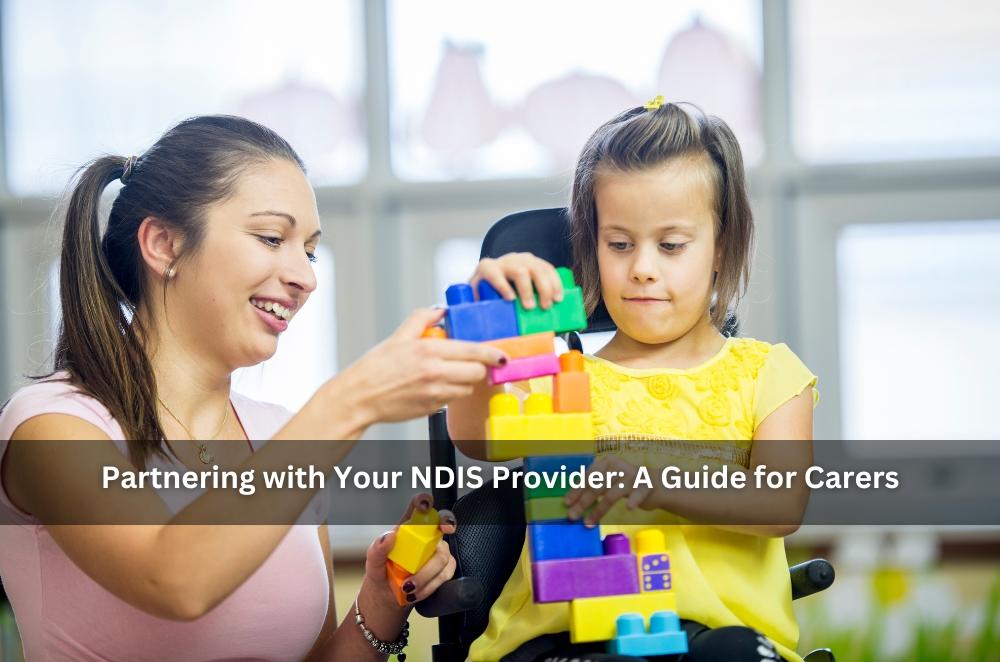Partnering with Your NDIS Provider: A Guide for Carers

Caring for a family member with a disability can be rewarding, but it also comes with long stretches of fatigue, decision-making, and the quiet pressure of always being “on.” What makes it sustainable is not just the support you provide but the support you can rely on in return. That’s where reliable disability care becomes important—it gives both the person you support and you, as their carer, a foundation of trust and consistency. When a provider understands routines, respects boundaries, and communicates openly, it feels less like outsourcing care and more like sharing the load. For me, the difference showed up in small ways: a provider who noticed the signs of sensory overload before I did, or one who followed through on a simple bedtime routine. Those moments reminded me that good care is a partnership, not a transaction, and it starts with the right provider relationship.
Start the partnership on a steady footing
A good start sets the tone. Begin with a short onboarding conversation focused on what life already looks like for the person you support, not an abstract ideal. Share the cues that keep things calm—how mornings unfold, what a settled evening feels like, which transitions are tricky. In my experience, a two-page profile beats a thick binder: one page for daily rhythm, one for safety and supports. That single artefact becomes the anchor for every worker who steps in.
-
Map the day: wake-ups, meals, wind-down, sleep.
-
List “non-negotiables”: communication style, sensory supports, mobility needs.
-
Nominate a preferred update method and frequency.
-
Agree on a simple format for after-stay notes (what changed, what helped).
I once supported weekend stays for a teenager who relied on a specific playlist to sleep. The first weekend drifted; we missed the cue. The second weekend, we put the playlist first, and everything else followed. Tiny detail, huge difference.
Respite in context: what it covers and when it helps
Respite isn’t a luxury add-on; it’s planned breathing space that helps carers keep going for the long haul. Depending on the situation, it might be in-home support, a short stay in a community setting, or even overnight care. Each format gives the carer a break while ensuring the person being supported remains safe and comfortable.
If you want to ground conversations with your provider in plain, shared language, it helps to look at how respite care support in Australia is described. That outline captures the common types—whether in-home, centre-based, or short-term accommodation—and when each is most useful. Using those definitions makes planning easier because everyone is speaking from the same page.
-
In-home: someone steps in at home so you can step out.
-
Centre-based: structured programs with social contact.
-
Overnight/short-term: a home-style or supported stay for a few nights.
-
Emergency: short-notice coverage when life goes sideways.
It’s also worth noting the broader system. My Aged Care is the national entry point for older Australians, which matters in households where you’re juggling supports across generations—useful context when providers are coordinating calendars, transport, and expectations.
Make routines visible so support stays consistent
Consistency doesn’t happen by accident; it’s designed. Treat routines as working parts you can name, share, and check. Write them down in short, active lines—“reduce light 30 minutes before bed”, “play two songs before brushing teeth”, “offer choices with two visuals”. Give these notes to the provider before the first stay, and ask how they’ll embed them.
-
Put “must-do” cues at the top of any care summary.
-
Flag triggers and de-escalation steps without jargon.
-
Share a short list of preferred activities that signal “calm”.
-
Capture one or two measurable outcomes you’ll both watch (e.g., time to settle, morning transitions).
A quick example from my notes: we once replaced late-night screens with a five-minute drawing ritual and dim lighting. The first night felt odd. By the third, the wind-down was smooth, and lights were out on time. Naming the routine made it repeatable.
Have a fallback for the days that go sideways
Emergencies don’t ask for permission, so it helps to have a plan that’s ready before you ever need it. Keep a one-page summary with medications, contacts, and key routines, and identify at least two providers who can step in on short notice. I’ve found that thinking this through early makes a big difference when things suddenly shift.
A well-prepared emergency respite guide can be useful for double-checking that you’ve covered the basics. It reminds carers to organise essentials like transport arrangements, a small “go” bag with calming items, and clear notes about triggers or comfort strategies. Having those details documented reduces stress in the moment because you’re not scrambling to remember them.
-
Store essentials together: plan number, behaviour supports, and allergies.
-
Nominate a backup decision-maker if you’re unavailable.
-
Keep a small “go” bag list for the participant’s favourite calm items.
-
Agree with your provider on who calls whom (and when) during a scramble.
If you’re in New South Wales, Carers NSW—the state peak body—keeps signposts to practical supports for carers, including pathways that touch planned and urgent breaks. Mentioning them early can save time later when your coordinator needs to confirm what’s available locally.

Strengthen decision-making with clear questions
When you’re choosing formats or tweaking a schedule, ask questions that push past labels and into fit. The goal is not “more support”, it’s “the right support, at the right cadence, in the right setting”. Your provider should be able to answer plainly.
-
Fit: “How will staff match sensory and communication needs?”
-
Setting: “When does a home-style stay suit better than a group setting?”
-
Continuity: “What’s the plan to keep the same worker across stays?”
-
Feedback: “How will outcomes be captured so we can adjust next time?”
A short follow-up call after the first stay keeps momentum. Pick one thing to keep, one to change, and one to trial. That frame keeps the partnership practical.
Final thoughts
The strongest partnerships with NDIS providers aren’t built on paperwork alone — they grow through consistency, trust, and a shared focus on the well-being of both the participant and the carer. Respite is one of the tools that makes this possible, whether it’s a planned weekend stay or urgent coverage when things shift suddenly.
Clarity helps when you’re deciding what type of support fits best. Having an understanding of NDIS respite choices in mind means you can approach conversations with your provider knowing the different shapes respite can take — from in-home routines to centre-based programs or short-term accommodation. This shared understanding makes it easier to agree on arrangements that feel practical and sustainable.







